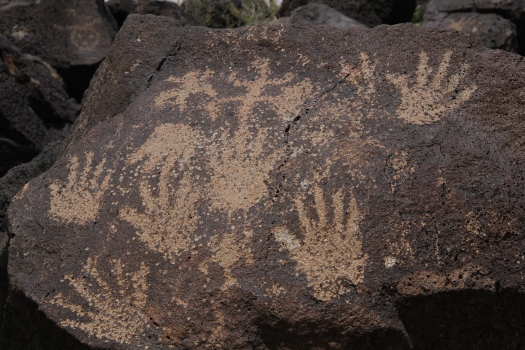This time of year usually sees a blog post about our attendance at the annual meetings of the Society for American Archaeology (SAA). The meetings are held in late March or April and attract thousands of archaeologists from around the world who share their research, connect with old friends, buy books in the exhibit hall, and generally revel in our discipline. The Peabody and Phillips Academy have a long history with the SAA and its annual meeting. The first ever annual meeting of the Society was held at Phillips Academy in December 1935. Doug Byers, the long-time director of the Peabody, served as the editor of American Antiquity, the Society’s flagship publication. Richard “Scotty” MacNeish was president of SAA.

Peabody personnel have continued to be involved with SAA. Staff members and members of the Peabody Advisory Committee regularly present papers and posters in the annual meeting sessions. Since 2017 we have had a booth in the annual meeting’s exhibit hall to promote the Linda S. Cordell Memorial Research Award, our book Glory, Trouble, and Renaissance at the Robert S. Peabody Museum of Archaeology, the Journal of Archaeology & Education, and generally network with folks in attendance. This year’s meeting was much the same, with lots of comradery with old and new friends, some great New Mexican cuisine, sightseeing at Petroglyph National Monument, and a visit to Albuquerque’s Red Planet Comics, a Native American-owned comic book store.
The difference this year, however, was that our discipline and the Society for American Archaeology have run headlong into issues of sexual harassment and discrimination that have garnered headlines everywhere from the film industry to tech and science sectors, often under the umbrella of #MeToo. These issues have been prevalent in archaeology for decades, and two of the papers in the session that I participated in, Sins of Our Ancestors (and of Ourselves), highlighted the contributions of women in museums and archaeology, and how their voices have often been excluded, their work co-opted, or their names simply excised or omitted from the record.

Shortly before the Society’s annual meeting this year news circulated about a Title IX investigation of a prominent archaeologist at the University of Alaska Anchorage. According to news stories published at the end of March 2019, the Title IX investigation into sexual discrimination and sexual harassment found accusations from nine women all credible. The professor was denied emeritus status, and students and faculty were advised to alert authorities if the professor was encountered on campus. This professor apparently registered for the SAA annual meeting on-site. Not long after this, at least three survivors encountered him at the conference and reported his presence to the meeting organizers. Michael Balter, a journalist who has reported on #MeToo in science and who was at the conference for a session on this topic, also reported the individual’s presence and ultimately escorted the professor out of the meetings. He, however, returned later.
While the above is troubling, it’s only the beginning of the story. The current furor in archaeology centers on the Society for American Archaeology’s response to what happened at the meeting. The initial response was sluggish at best and often misguided. Michael Balter, the journalist who ejected the professor, was himself kicked out of the conference by the meeting organizers. Ultimately, over 2,300 people (many SAA members) signed an open letter to the Society that castigates the SAA for its response and demands action.
Apologies to the survivors were late in coming and there has been a general disregard for how this event has impacted all survivors of harassment and abuse who were at the meeting. Social media posts by the Society have blamed others or presented distorted timelines. It’s left many of us wondering how we can encourage the next generation of archaeologists to attend these meetings if they aren’t safe spaces, let alone continue our own support for an organization that is willing to tolerate sexual harassment and all its attendant hurt, trauma, and pain. At least three of the survivors have gone public with their experiences at the conference, including their interactions with SAA professional staff and leadership. Their posts on social media continue to raise concerns.
The SAA’s new president, Joe Watkins, issued an apology via a video message and letter on April 18. Comments on social media indicate that the apology was well received by some, but not all. Watkins, in his letter to SAA members, promises that the Society “will create a body to examine the short-comings in our sexual harassment policy of 2015 and the anti-harassment policy of 2018” and “do our best to ensure that this does not happen again.” He does, however, acknowledge that the recommendations of task forces have often been ignored by SAA leadership in the past.
If you want to learn more about what happened at the meeting and in the ensuing weeks, take a look at these articles by Lizzie Wade, Kerry Grens, as well as Kristina Kilgrove’s resignation as chair of the SAA media relations committee, and follow Norma Johnson on Twitter: https://twitter.com/nmj428
UPDATE 4/26/2019: See Kristina Kilgrove’s blog for a timeline of events.
